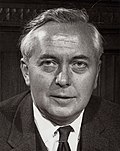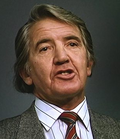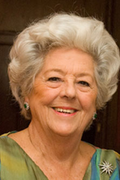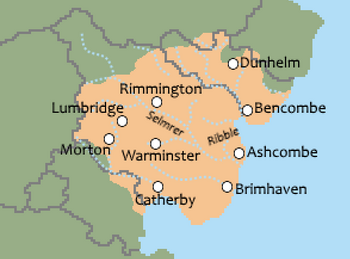User:Glitter/Sandbox3
Richardson Cabinet
| Portfolio | Minister | Took office | Party | |
|---|---|---|---|---|
| Prime Minister | Reginald Wilton-Smythe | 2019 | National Union Party | |
| Secretary for Foreign Affairs and Deputy Prime Minister |
Anne Buckett | 2017 | Progressives | |
| Secretary for Agriculture and Rural Matters | Bênardin Saint Hélyi | 2019 | National Union Party | |
| Secretary for Commerce | M. E. Carlson | 2017 | Progressives | |
| Secretary for Culture, Tourism, and Sport | Lilianne Harcourt | 2019 | National Union Party | |
| Secretary for Defence | Henry Edwards | 2015 | Progressives | |
| Secretary for Education and Research | Matilda de Fay | 2019 | National Union Party | |
| Secretary for Energy and the Environment | Angela Matthiasson | 2015 | Progressives | |
| Secretary for the Euclean Community | Roseline Perrier | 2019 | National Union Party | |
| Secretary for the Federal Treasury | Geraint d'Auvergne | 2019 | National Union Party | |
| Secretary for Healthcare | Edgar Allerton | 2017 | Progressives | |
| Secretary for Housing and Urban Matters | Vernon Geary | 2019 | National Union Party | |
| Secretary for Internal Affairs | Godfred Alfredson | 2015 | Progressives | |
| Secretary for Justice | Êdouard Aveline-Duquesne | 2019 | National Union Party | |
| Secretary for Labour and Pensions | Grant Dalton | 2016 | Progressives | |
| Secretary for Transport and Infrastructure | Clive Disney | 2014 | Progressives | |
| Secretary for Welfare and Social Inclusion | Louis Le Maistre | 2019 | National Union Party | |
| Secretary for Women and Children | Edith Lionheart | 2017 | Progressives |
Party Info
| Leader | Since | Party | |
|---|---|---|---|
| Rupert Richardson | 2014 | National Union Party | |
| Anne Buckett | 2017 | Progressives | |
| Robert Spencers | 2016 | Democratic Labourer’s Party | |
| George Avery | 2013 | Estmere First | |
| Olivia Baskerville | 2015 | Agrarian Interest Party | |
| Alfred Bryer | 2009 | Party of the Swathish | |
| Roy Wilburn | 2011 | Common Wealth |
Old Parties:
- Conservative Party (Big-tent Conservatives)
- Old-line Party (Swathish Conservatives)
- Traditionalistes (Flurian Conservatives)
- Sotrian Social Party (Amendist Sotrian Democrats)
- Solarian Catholic People's Party (Catholic Democrats)
- Liberal Radical Party (Estmerish and Flurian Liberals)
- Ameedist Party (Swatish Liberals - 'Reform Party')
- Party of the Socialists and Democrats (Social Democrats)
| Party | Position | Leader | Seats | Status | |
|---|---|---|---|---|---|
| National Union Party | Centre-right | Rupert Richardson | 169 / 500 |
||
| The Progressives | Centre-right | Anne Buckett | 142 / 500 |
||
| Democratic Labourer's Party | Centre-left | Robert Spencers | 78 / 500 |
||
| Estmere First | Far right | George Avery | 64 / 500 |
||
| Agrarian Interest Party | Centre | Olivia Baskerville | 23 / 500 |
||
| Party of the Swathish | Big tent | Alfred Bryer | 18 / 500 |
||
| Common Wealth | Far left | Roy Wilburn | 6 / 500 |
Bailiffscourt
https://en.wikipedia.org/wiki/Gravensteen Initial seat of the High-Bailiffs or whatever they are called, eventually begins operating as the Tower of London equivalent after they get a nicer residence.
Heads of State
Kingdom of Embria (1084-1195)
- Richard I the Great (1084-1106)
- Richard II the Lesser (1106-1123)
- Stephen (1123-1151)
- William I (1151-1173)
- William II (1173-1189)
- Robert (1189-1192)
- Constantine the Wicked (1192-1195)
Commonwealth of the United Estmerish Counties (1195-1737)
- Clovis I (1195-1218)
- William I
- William II
- Clovis X
- William III
- Clovis XI
- Clovis XII (1703-1730)
- William IV (1730-1736)
- Clovis Richard (1734-1737)
Estmerish Republic (1732-1737)
- Presidium of the Twelve (1732-35)
- Names
- Military Dictator (1735-37)
Kingdom of Estmere (1737-1935)
House of Vernon-Dryden
- Clovis Richard I (1737-1769)
- Henry (1769-1794)
- Clovis Richard II (1794-1827)
- Charles I (1827-1851)
- William I (1851-1867)
- William II (1867-1904)
- Charles II (1904-March 1918)
- William III (March 1918-1935)
Estmerish Authority (1927-1935)
- High Warden Norman Name
Provisional Government (1935-1937)
Federated Republics of Estmere (1937-present)
Parties
- note - presidents take office on the first of November
| No | Picture | Name | Term | Tenure | Presidential mandate | Prime Minister(s) | Affiliation | |
|---|---|---|---|---|---|---|---|---|
| 1 | 
|
Wolfgar Godfredson |
- | 1 January 1937 |
11 November 1940 |
Acting | TBD (NUP) | Independent |
| 1 | 1 November 1940 |
1 November 1945 |
1940 — 72.4% | TBD (NUP) TBD (SSP) | ||||
| 2 | 1 November 1945 |
1 November 1950 |
1945 — 68.3% | TBD (SSP) (SSP) (NUP) | ||||
| 3 | 1 November 1950 |
1 November 1955 |
1950 — 63.1% | (NUP) (DLP) (NUP) | ||||
| The first President of the Federated Republics. During the Great War, he served as a high ranking general in the Estmerish Royal Army. He was active in operations which defended the Estmerish Panhandle from Entente advances and led the campaign to liberate Ashcombe. The Transitional Government appointed him unanimously to serve as acting president until the 1940 elections. Godfredson was immensely popular and won re-election in 1940, 1945, and 1950. He declined to stand again in the 1955 election. His tenure saw Estmere join the Community of Nations (1935), the United Nations of Euclea (1935), and the Euclean Community (1948). Oversaw the nationalization of the Estmerish railways, coal mines, and airlines. | ||||||||
| 2 | 
|
Henry Beaufort |
4 | 1 November 1955 |
1 November 1960 |
1955 — | (NUP) | National Union Party |
| 5 | 1 November 1960 |
1 November 1965 |
1960 — | (NUP) (NUP) | ||||
| Beaufort was the first president from the NUP and oversaw the Gilded Years, a period of sharp economic growth under successive NUP governments. Despite the significant economic growth, inequality between the richest and poorest widened. | ||||||||
| 3 | 
|
William G. Norcross |
6 | 1 November 1965 |
1 November 1970 |
1965 — | (NUP) 1965-1968 Eric Godwinson (P) 1968-1970 |
National Union Party |
| Close of the Gilded Years. Defeat of the NUP in the 1968 election. Beginning of the decline of Estmere has a global power. | ||||||||
| 4 | 
|
Eric Godwinson |
7 | 1 November 1970 |
1 November 1975 |
1970 — | (P) | Progressives |
| 8 | 1 November 1975 |
1 November 1980 |
1975 — | (P) Margaret Kingson (NUP) 1976-1980 | ||||
| First president from the Progressives and former prime minister. Party veteran deeply involved in the evolution from the Sotirian Social Party to the Progressives. Oversaw successive Progressive governments, implementation of Karlssonist economic policies, universal healthcare, and the start of the NUP-Progressive electoral alliance and coalitions. Continued decline of Estmere's global influence, tenure saw relinquishing of a number of foreign naval bases. | ||||||||
| 5 | 
|
Roger Williams |
9 | 1 November 1980 |
1 November 1985 |
1980 — | Margaret Kingson (NUP) | National Union Party |
| 10 | 1 November 1985 |
1 November 1990 |
1985 — | John Braithwaite (NUP) 1985-1988 (P) 1988-1990 | ||||
| Coalition governments under Williams for the most part continued to implement Karlssonist policies. However, government spending was complicated by the Recession of 1986. During the recession, Prime Minister John Braithwaite announced controversial plans to switch from coal to nuclear power. This triggered the 1987 Estmerish political crisis. which saw the coal miners and students strike, subsequent violence, and Kiphill Massacre. | ||||||||
| 6 | 
|
George Hammond |
11 | 1 November 1990 |
1 November 1995 |
1990 — | (P) 1990-1992 (DLP) 1992-1995 |
Democratic Labour Party |
| First and only president from the Democratic Labour Party. DLP formed a coalition government in 1992, unseating the long-time Federal Appeal coalition. Despite the heavy infighting that plagued the DLP, Hammond avoided politics and maintained decent approval ratings. He was defeated in the 1995 election by a coordinated NUP-Progressive campaign. | ||||||||
| 7 | 
|
Rudy Fitzallen |
12 | 1 November 1995 |
2000 | 1995 — | (DLP) 1995-1996 (NUP) 1996-2000 |
Independent |
| A carefully chosen candidate by the Federal Appeal, Fitzallen was a popular member of the Progressives' backbench. He was chosen to win back the presidency from Hammond. His tenure saw the Federal Appeal alliance return to power. He declined to stand for re-election. | ||||||||
| 8 | 
|
Margaret Kingson |
13 | 1 November 2000 |
1 November 2005 |
2000 — | (P) | National Union Party |
| First female president. Previously served as the first female prime minister. | ||||||||
| 9 | 
|
Walter Eaton |
14 | 1 November 2005 |
1 November 2010 |
2005 — | (P) William Avery (EF) 2008-2010 |
Progressives |
| 15 | 1 November 2010 |
1 November 2015 |
2010 — | William Avery (EF) 2010-2012 Agatha Sharpe (P) 2012-2015 | ||||
| Sparred extensively with the Estmere First government elected in 2012. A number of public spats with Prime Minister William Avery. Broke with tradition and had a politically active presidency, rallying the opposition parties in a near-united front against the 2010 Euclozone Referendum. Ran against Avery's younger brother, George, in the 2010 presidential election but the race was uncontested by the other opposition parties. Played a significant role in the 20120 general election, extensively campaigning for the Federal Appeal alliance. | ||||||||
| 10 | 
|
Alice Roberts |
16 | 1 November 2015 |
Incumbent | 2015 — 54.7% | Agatha Sharpe (P) 2015-2016 Rupert Richardson (NUP) 2016-present |
Independent |
| Roberts was chosen as a compromise candidate by the Federal Appeal electoral pact. A former member of the Progressives, she served as a senior minister in previous coalition governments. She stood as in independent in 2015 and had the backing of both the NUP and the Progressives. | ||||||||
Constituent States
Predecessor States
Kingdom of Embria
This article is incomplete because it is pending further input from participants, or it is a work-in-progress by one author. Please comment on this article's talk page to share your input, comments and questions. Note: To contribute to this article, you may need to seek help from the author(s) of this page. |
Kingdom of Embria | |||||||||
|---|---|---|---|---|---|---|---|---|---|
| 1084–1195 | |||||||||
|
Flag | |||||||||
 Embria at its greatest extent in 1176 | |||||||||
| Capital | |||||||||
| Common languages | Embrian-era Estmerish Old Verique | ||||||||
| Religion | Catholicism | ||||||||
| Demonym(s) | Embrian | ||||||||
| Government | Absolute Monarchy | ||||||||
| King | |||||||||
• 1084-1106 | Richard I (First) | ||||||||
• 1123-1151 | Stephen | ||||||||
• 1173-1189 | William II | ||||||||
• 1192-1195 | Constantine (Last) | ||||||||
| History | |||||||||
• Conquest | 1084 | ||||||||
• Reorganization | 1195 | ||||||||
| Currency | Livre | ||||||||
| |||||||||
Embria (Embrian-era Estmerish: Æmyrġelond rice, the Kingdom of Embria) was the first unified Estmerish state. It encompassed most of present-day Estmere and was established in 1084 by Richard Harcourt. Emrbia was eventually dissolved and reformed following the close of The Anarchy and the establishment of the Estmerish Commonwealth in 1195.
Following the conquest of the Hennish Counties, a number of powerful Verique lords crossed the X River, waging war with the Swathish Petty Kingdoms located in the south of Estmere. By 1084, the majority of the region was brought under the control of the Verique, who were led by Richard Harcourt. Richard established himself as the Count of Catherby and was the brother of the powerful Duke of Zilverzee, granting him significant influence over the other Verique lords. After the Verique established control over present-day Flurland, Richard the Kingdom of Emrbia was established and Richard was crowned king. This resulted in the dispossession of the Swathish nobility and its replacement by a new Flurian-speaking aristocracy, leaving a profound impact of the Estmerish culture and language. During his reign as king, Richard I implemented a carefully balanced feudal system, maintaining the power of the crown while at the same thing relinquishing authority to his vassals. His reign was one of prosperity, generating significant wealth for the Emrbian nobility.
The Kingdom of Emrbia remained relatively prosperous over the next century. Various kings implemented further reforms that brought new wealth to the kingdom. Many of the remaining independent Swathish petty kingdoms were gradually conquered and brought under Embrian domain. Similar to the petty kingdoms conquered under Richard I, the Swathish nobility saw its lands seized and distributed to Verique nobles. Buckland was also conquered, however the Buckish elite aided the Verique in their conquest of the kingdom of SOMETHING. For their support, they and faced minimal dispossession and were left to govern the newly made Northmarch province for their Verique overlords.
Following the death of William II, the country descended into internal strife and began a period known as The Anarchy. Nearly a decade of civil war left the kingdom devastated, with many of the Harcourt heirs killed in the fighting. The instability ended when the Petty Council, led by Clovis Vernon, the Count of Tidmouth, revolted and overthrew the last Harcourt king, Constantine. This resulting in the end of the Embrian monarchy the establishment of the Commonwealth of the United Estmerish Counties.
Fighting Estmere
Fighting Estmere | |||||||||
|---|---|---|---|---|---|---|---|---|---|
| Mid-1929–1934 | |||||||||
| Capital |
| ||||||||
| Government | Government in exile, provisional government over unoccupied and liberated territories | ||||||||
| Leaders | |||||||||
• 1929-1931 | William III King | ||||||||
• 1929-1934 | Edmund G. Norcross Prime Minister | ||||||||
• 1929-1934 | Wolfgar Godfredson Commander of the ELA | ||||||||
| History | |||||||||
• Fall of Ashcombe | Mid-1929 | ||||||||
• Liberation | 1934 | ||||||||
| |||||||||
Fighting Estmere, also known as Free Estmere and the Estmerish government-in-exile and later as the Estmerish Provisional Government, was the series of the Estmerish governments-in-exile during the Great War. Legally, it was known as the Kingdom of Estmere but this fell out of use as the war progressed. It was supported by its military forces, the Estmerish Liberation Army, that continued to fight against the Entente powers as one of the Grand Alliance after the fall of Estmere. The government originally fled north, to the city of Longwood, following the capture of the capital by Gaullican forces. Later, it was forced to relocate to Occupied Caldia. Fighting Estmere also operated extensively out of Werania, which was among its strongest supporters. The government-in-exile also organised and supported the Resistance in occupied Estmere.
Revolution of 1935-1936
| Red Revolution | |||||||
|---|---|---|---|---|---|---|---|
 Estmerish government tanks at the Haymarket in Morton amid unrest. | |||||||
| |||||||
| Belligerents | |||||||
|
|
| ||||||
| Commanders and leaders | |||||||
|
|
| ||||||
| Strength | |||||||
| ~32,596 loyalist soldiers, police and armed militia |
~1.8 million protesters 180,000 soldiers, militia and police | ||||||
| Casualties and losses | |||||||
| 2,559 killed or injured | 4,889 killed or missing | ||||||
| 22,000-55,000 people killed or executed by revolutionary groups throughout the revolution. | |||||||




